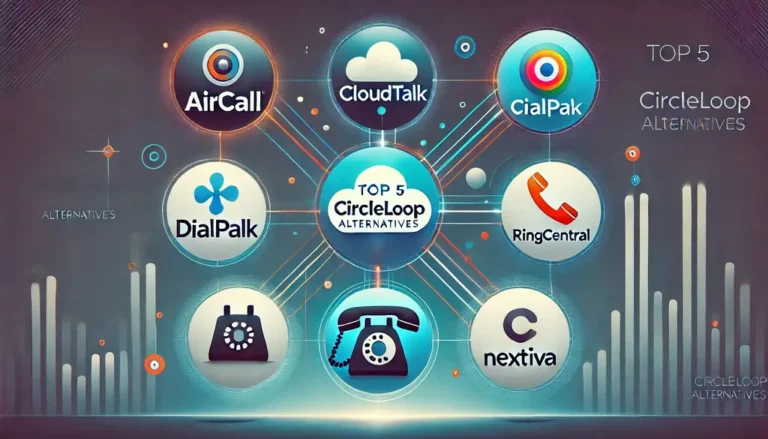Every sales call is a high-stakes interaction. The words you choose and, more importantly, the way you say them, can either draw a prospect in or push them away. Too often, sales professionals focus solely on their script, ignoring the fact that how they deliver their message plays a crucial role in influencing the buyer’s decision.
Tone and language are the heart of persuasive communication. The right tone fosters trust, encourages engagement, and signals confidence, while the wrong one can create distance, skepticism, or even irritation. Language, on the other hand, shapes how the prospect perceives both the product and the salesperson. Words that resonate create curiosity, while jargon-filled or robotic speech can alienate potential customers.
Mastering tone and language is a necessity. Understanding how to communicate effectively can make the difference between a lukewarm “I’ll think about it” and a confident “Yes, let’s move forward.”
This article explores why tone and language are critical in sales calls, how they impact buyer psychology, and how sales professionals can improve their verbal delivery to close more deals.
The Science Behind Tone and Language in Communication
Sales conversations are not just about words; they are about perception. Research has shown that when people evaluate a message, only a small percentage of their perception comes from the words themselves. Instead, tone of voice and delivery play a dominant role in shaping how the message is received.
Tone conveys emotions. A confident and warm tone can make prospects feel comfortable, while a rushed or monotone voice can make them disengage. For example, a salesperson who speaks too quickly might come across as nervous or desperate, while one who speaks with calm authority builds trust.
Language also has a psychological impact. Positive, inclusive language makes the listener feel valued and part of something bigger, while aggressive or overly technical language can create confusion or resistance. A salesperson who says, “I’d love to find a way to help your business grow” sounds collaborative, while one who says, “This is the best software you’ll ever find” sounds pushy.
Sales professionals can adjust their approach to create a more persuasive and effective sales pitch if they understand the psychological principles behind tone and language
Tone in Sales Calls
Now, we’ll look into what your tone has to do with the sales calls:
Building Rapport and Trust
People buy from those they trust. Trust is built through communication that feels natural, confident, and engaging. When a salesperson speaks in a warm and personable tone, it signals authenticity, making it easier to establish a connection with the prospect.
A robotic or overly scripted tone can create a sense of distance, making the conversation feel transactional rather than relational. A good salesperson knows how to balance professionalism with natural conversation, adjusting their tone to match the energy of the person on the other end of the call.
One technique for building trust is mirroring—subtly matching the tone, pace, and speech patterns of the prospect. If they are relaxed and casual, mirroring that energy helps create rapport. If they are direct and business-like, responding similarly makes them feel understood.
Conveying Confidence and Authority
Confidence is a non-negotiable element of successful sales calls. If a salesperson sounds unsure or hesitant, the prospect will question the credibility of the offer. Confidence doesn’t mean being aggressive—it means speaking with certainty and clarity.
A salesperson who speaks with a steady, well-paced voice naturally commands attention. Pausing at the right moments instead of rushing through the pitch gives the impression of control and expertise. Avoiding filler words like “um,” “like,” and “you know” helps reinforce the perception of confidence.
Additionally, the ability to adjust tone based on the conversation is essential. If a prospect expresses concerns, a reassuring and empathetic tone helps ease their doubts. If they seem interested but hesitant, a more enthusiastic tone can help push them toward a decision.
Creating a Sense of Urgency
Urgency is one of the most powerful tools in sales—when used correctly. If a salesperson communicates urgency in a way that feels natural, it can motivate the prospect to take action. However, if it comes across as forced or overly aggressive, it can have the opposite effect.
A well-placed sense of urgency is communicated through a combination of tone and phrasing. Instead of saying, “You need to buy today,” which sounds pushy, a salesperson can say, “Many of our clients have found that acting quickly gives them a competitive edge.” The key is to make the urgency about the prospect’s benefit rather than a pressure tactic.
The Impact of Language Choice in Sales
Now, we’ll look into the impacts of language choice on sales:
Using Positive and Inclusive Language
Language shapes perception. Positive, engaging language encourages prospects to visualize success with the product, while negative or hesitant language creates doubt.
For instance, saying, “I’m not sure if this will work for you, but…” immediately plants uncertainty in the prospect’s mind. Instead, rephrasing to, “Many businesses in your industry have seen great results with this” builds confidence.
Inclusive language also fosters a sense of collaboration. Using words like “we” instead of “I” shifts the focus to partnership. Saying, “Let’s explore how this fits your needs” feels more inviting than “I think this is right for you.”
Avoiding Jargon and Complex Terminology
While technical knowledge is valuable, too much jargon can make a sales pitch confusing or intimidating. Prospects want clarity, not complexity.
Instead of saying, “Our AI-powered SaaS solution leverages deep learning algorithms for data optimization,” a salesperson should simplify: “Our software helps you get the best results using smart automation.” The goal is to make the message accessible and easy to understand.
Personalization and Empathy
Sales is about solving problems, and the best way to do that is through personalized communication. A generic pitch feels impersonal, while one that acknowledges the prospect’s specific needs creates engagement.
Instead of saying, “This software is great for businesses,” a salesperson can say, “Based on what you mentioned about your team’s workload, this software can help you automate repetitive tasks and save hours every week.”
Empathy also plays a critical role in language choice. A prospect with concerns should be met with phrases like, “I completely understand where you’re coming from,” rather than dismissive responses. Empathy reassures the prospect that their needs are a priority.
Training AI to Sound Like a Human in Sales Calls
Here’s what AI can do for sales if you train it like a human:
- The Importance of Natural-Sounding AI in Sales: As AI-driven sales tools become more common, one challenge remains—how to make AI sound more human. People are naturally skeptical of robotic interactions, so AI must be trained to communicate in a way that feels authentic.
- Machine Learning and Speech Synthesis for Human-Like AI: AI-powered voice tools now use advanced speech synthesis to replicate human tone, pacing, and intonation. Deep learning models refine AI voices over time, making interactions feel more natural.
- Emotion and Tonality Training for AI Sales Calls: AI systems are now capable of recognizing emotional cues and adjusting tone accordingly. If a prospect sounds hesitant, AI can shift to a more reassuring tone. If they seem excited, AI can match that enthusiasm.
- Best Practices for Training AI for Effective Sales Conversations: To improve AI-driven sales tools, businesses use real sales data to refine voice patterns and responses. Implementing human-in-the-loop learning—where AI receives feedback from real sales professionals—ensures continuous improvement.
Conclusion
Sales calls are won or lost based on tone and language. A well-crafted message delivered with confidence, warmth, and clarity is far more effective than even the best script spoken in a flat or hesitant tone.
Sales professionals can build stronger connections, increase trust, and close more deals by training with these skills. Whether you’re a human salesperson refining your approach or a business training AI to sound more natural, the right tone and language will always be the key to success.





![Contact Center Trends and Prediction [2025]](https://biglysales.com/wp-content/uploads/2025/01/Contact-Center-Trends-and-Prediction-2025-768x439.webp)


